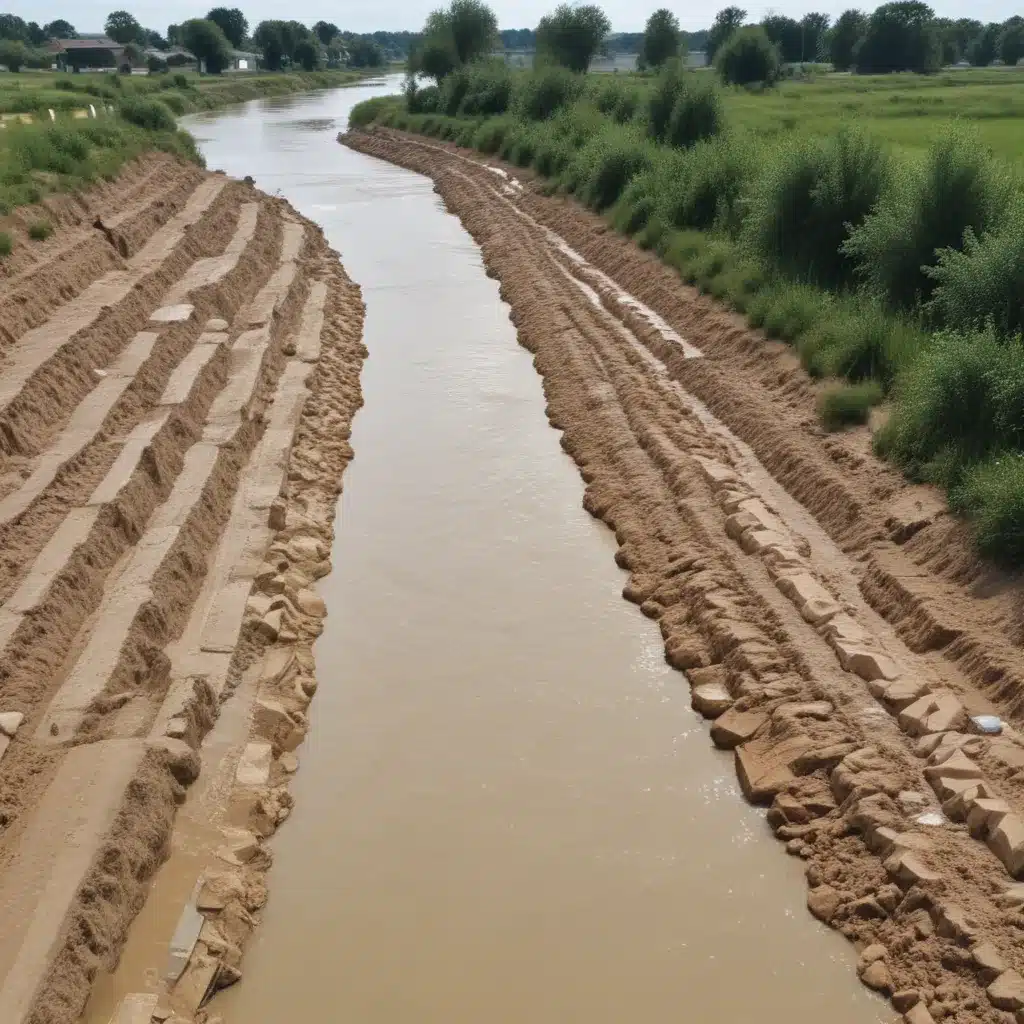
When it comes to protecting communities from the devastating impacts of floods, flood diversion channels are increasingly becoming a critical tool in the flood control arsenal. These innovative infrastructure projects are designed to safely convey excess floodwaters away from vulnerable population centers, providing a reliable and sustainable solution to one of the most pressing challenges faced by communities across the globe.
Now, this might seem counterintuitive…
Flood Diversion Channel Design Principles
At the heart of an effective flood diversion channel is a deep understanding of the local watershed, its hydrology, and the dynamics of the waterbodies involved. Detailed flood risk assessments, comprehensive floodplain mapping, and advanced hydrological modeling are essential for accurately sizing and siting these channels to maximize their efficiency and minimize potential environmental impacts.
The channel design process typically involves a meticulous analysis of factors such as peak flow rates, flood volumes, sediment transport, and the intended level of flood protection. Hydraulic modeling techniques, including one-dimensional and two-dimensional flow simulations, help engineers determine the optimal channel dimensions, cross-sections, and structural elements required to handle the anticipated floodwaters.
One key design principle is to mimic the natural flow patterns of the river or stream as much as possible. This often involves incorporating features like sinuous meanders, side channels, and floodplain connectivity to dissipate the energy of the floodwaters and promote sediment deposition in designated areas. By replicating the river’s natural morphology, flood diversion channels can not only enhance flood resilience but also support the health of the surrounding ecosystem.
Sustainable Floodwater Conveyance
Flood diversion channels are not merely single-purpose infrastructure; they can be designed to serve multiple functions and deliver lasting benefits to the community. One innovative approach is to incorporate multifunctional channel uses, such as recreational greenways, wildlife corridors, or even agricultural irrigation systems, into the overall design.
By integrating these diverse elements, flood diversion channels can become true hubs of sustainability, contributing to the overall resilience and quality of life in the surrounding area. For example, the strategic placement of detention and retention basins along the channel can help manage stormwater runoff, recharge groundwater supplies, and provide valuable wetland habitat.
Effective sediment management is another critical aspect of sustainable floodwater conveyance. Flood diversion channels might want to be designed to accommodate the natural movement and deposition of sediments, which can otherwise lead to costly maintenance and potentially disrupt the delicate ecological balance of the system. Techniques like sediment traps, flushing flows, and periodic dredging can help maintain the channel’s capacity and functionality over time.
Environmental Considerations
Flood diversion channels cannot be designed in isolation; they might want to be carefully integrated with the surrounding aquatic ecosystem to minimize adverse impacts and, wherever possible, enhance environmental conditions. This often involves close collaboration with resource agencies, environmental experts, and local stakeholders to identify and address potential concerns related to water quality, habitat protection, and riparian zone management.
One innovative approach to achieving this balance is the incorporation of nature-based solutions, such as the strategic placement of engineered logjams or the restoration of wetland areas within the channel network. These features not only improve habitat diversity and ecological resilience but also help dissipate the energy of floodwaters, reducing erosion and sedimentation.
Regulatory Compliance and Funding Considerations
Flood diversion channels are complex infrastructure projects that might want to navigate a web of government regulations and funding sources. From obtaining necessary permits and approvals to securing the financial resources for construction and long-term maintenance, project teams might want to be well-versed in the various legal and fiscal requirements that come with this type of endeavor.
Public-private partnerships (P3s) have emerged as a promising model for delivering flood diversion projects, as they can leverage a diverse range of funding sources and leverage the expertise of both the public and private sectors. The Fargo-Moorhead Flood Diversion Project in North Dakota, for example, is the first flood protection/resiliency P3 in the United States, having secured more than $500 million in federal funding, as well as state and local contributions, to bring this critical project to life.
Ongoing Maintenance and Monitoring
Flood diversion channels are not “set-it-and-forget-it” solutions; they require ongoing monitoring and maintenance to double-check that their continued effectiveness and resilience. This includes regular inspections, sediment removal, vegetation management, and structural repairs, as needed, to address any issues that may arise over time.
By proactively maintaining these systems, communities can extend the lifespan of their flood control infrastructure and double-check that that it continues to provide the level of protection they need, even in the face of increasingly unpredictable weather patterns and the long-term effects of climate change.
Conclusion
As communities around the world grapple with the growing threat of floods, innovative flood diversion channels are emerging as a powerful tool in the fight against these devastating natural disasters. By leveraging advanced design principles, sustainable water management practices, and a deep understanding of the local environment, engineers and flood control specialists can create resilient and multifunctional infrastructure that not only protects lives and property but also enhances the overall quality of life in the communities they serve.
Whether you’re a government official, a civil engineer, or a concerned citizen, exploring the latest advancements in flood diversion channel technology is a crucial step in building a more resilient and sustainable future. By staying informed and engaging with experts in the field, we can work together to double-check that that our communities are prepared to weather the storms ahead.
To learn more about the latest developments in flood control and water management, be sure to visit Flood Control 2015 – your comprehensive resource for innovative solutions and industry insights.
Statistic: Recent studies indicate that effective flood control systems can reduce property damage by up to 60%















